Inboard power advancements have come a long way this century. To see how far, The Captain’s crew climbed aboard an Aussie icon — a 20-year-old Caribbean 26 sedan — recently repowered with twin 240HP Volvo Penta Aquamatics (petrol variants).
The outboard engineers have been a busy bunch, supercharging their towers of power, adding props and hitting the horsepower headlines with “biggest ever” model launches. In their shadows, the inboard techies haven’t been laying idle. They’ve come a long way since their cast-iron origins, when the engines had a bad rep for corrosion, reliability and bad drinking habits. Some say inboards are only good for mooring anchors, but they probably haven’t ridden aboard a rig powered with inboard technology since the iPad was invented. On the flipside, some swear you can’t beat the performance of an inboard, with the inherent stability created by central weight, rather than excessive weight hanging out back that can create a pendulum effect.
To test the latest inboard petrol technology, we caught up with Matt Inman, owner of R&M Marine Services, in the Victorian coastal town of Portsea, nestled inside Port Phillip Bay on the Mornington Peninsula. It’s the unofficial playground for Caribbean boats and over the summer months, models of all vintages can be found swinging from moorings, dropping for snapper and towing kids on tubes.
CARIBBEAN QUEEN
We’re aboard a ’98 model Caribbean sedan formerly fitted with twin 200HP EFI Mercruisers. The classic old girl was recently refitted with twin 240HP Volvo Penta Aquamatics. They also feature duo-props. Four stainless steel propellers (12 blades in total) push the classic Caribbean along at 44 knots (82km/h), more than 10 knots faster than the previous donks. Cruising is also more efficient — at 4500 revs, the engines use 60L per hour combined, almost half the consumption of the old Mercruisers.
The Volvo Penta features an all-alloy block and heads with freshwater closed cooling, reducing the corrosion issues inherent with cast-iron models. They also save weight, each configuration (engine, leg and props) weighing 80kg less than the old model Mercuisers. The Volvo Penta tech guys have added tricks such as direct injection.
Matt takes up the tale: “Fuel pressure is around 2400psi and fired directly into the cylinder for a controlled, efficient burn — and the variable camshaft timing delivers consistent power right through the rev range.” He reckons the improved fuel system and catalytic converter eliminate some of old bad habits, such as fuel smell at low speeds. We verify Matt’s claim, doing our best Snoopy impersonation on the back deck, while running at high and low speeds. On the emissions Matt says: “An oxygen sensor connected to a computer constantly monitors the gases and adjusts the fuel ratios to give optimum performance.”
BORN-AGAIN BEASTIE
Matt reckons boat handling is the big winner when it comes to inboard configurations. “They give the big Caribbean a low centre of gravity, making it predictable and rock solid in all running conditions, even with a 3m beam.” And the duo-props enhance the handling. “Low-speed manoeuvrability is absolutely exceptional, the boat tracks truer and flatter, whether heading in a straight line or through tight turns. Acceleration is amazing — it gets up on plane and sucks you into the seat,” he says with a grin. There’s no secret to getting maximum performance, Matt says the computer-controlled engines do it all, once you’ve fitted the right propellers.
The Caribbean went through an external makeover as well, Matt fitting a new dash, upholstery and lounge. “Even though it’s 20 years old, it presents like a brand-new boat.” We enquire about the condition of the hull when Matt started pulling things out. “The transom was absolutely solid — the build quality is fantastic. We’ve never had any drama with these old Caribbeans. If anything, it’s the owners chipping the gelcoat off.”
Matt has more than a dozen Caribbeans under his care. “They’re a great lifestyle boat and excellent all-rounder,” he says. “They’re big and safe for the family with a deep internal freeboard. You can fish on it, you can laze around on summer days or you can have family on board and kids out the back on a donut.” Matt says there’s other benefits of going inboard. “There’s no motor blocking the view, and no obstruction to the boarding platform. There are no visible fuel lines, wiring looms or steering cable sticking out.
This 26ft sedan doesn’t have many bells and whistles, but there’s plenty of deck space and a wide-open cabin that we all duck into, devouring a breakfast from one of Queenscliff’s seaside cafes.
R&M MARINE SERVICES
Matt Inman runs R&M Marine Services, located on the Mornington Peninsula. He’s part of the Volvo Penta dealer network. When he needs engines, parts or technical support, he calls on Aqua Power Marine, the Volvo Penta Center and hub for Volvo Penta in Victoria and Tasmania. As well as service and repowers, Matt can also project manage a full refurbishment, slipping and mooring.
MORE INFO
R&M Marine Services
5 Jennings Court, Rosebud, Victoria.
(03) 5986 7788; 0425 803 788
info@rmmarine.com.au/www.rmmarine.com.au
Aqua Power Marine
9 Hi-Tech Place, Seaford, Victoria
(03) 8796 3900.
www.aquapower.com.au
The Johnson Motor Company came up with the first stern-drive in 1930, although they called it an “inboardoutboard”. Unfortunately, it proved a commercial failure as most boats had to be redesigned to accommodate it.
Fast forward to 1948 and a young student engineer at MIT called Charlie Strang, who also happens to race boats, figures if he plonks a car engine in a boat and links it to an outboard-like drive he’s sure to get the grunt he needs to win races. But the American Power Boat Association rejects his proposal, so Strang puts his brainwave on the backburner for 10 years.
It’s now 1957 and Strang is heading up R&D for Kiekhaefer Mercury. With fellow Mercury engineers Jim Wynne and Charles Alexander, he revisits his stern-drive concept, pitching the idea to Mercury boss Carl Kiekhaefer, who gives the R&D team the thumbs down, calling it a “horseshit idea” that will only cut into Mercury’s booming outboard sales.
Majorly pissed off, Jim Wynne pulls the pin, leaving Mercury to become a “marine consultant”, which as he later said, “in Miami, means anybody who hasn’t got a job.” However, knowing he’s onto a good thing, Wynne files a design patent in 1958 and keeps working on the project in his garage. His “Eureka” moment comes when he introduces a double universal joint, which allows the drive to swing back and forth for steering, and tilt up and down — merging the power of the inboard with the manoeuvrability of the outboard. Strang is happy to help refine the design, but only if it’s under the radar, as he has been offered the president’s job at Mercury and doesn’t want to jeopardise it. He tells Wynne to “do what you want with it”. So Wynne does, flying to Sweden to sell the patented stern-drive rights to Volvo Penta, which agrees to pay him a royalty for each stern-drive unit it sells.
At the 1959 New York Boat Show, Volvo Penta launches its “Aquamatic” with much razzle-dazzle. Carl Kiekhaefer notes the tidal wave of boat-owner interest and decides Mercury now must have its own stern-drive. So he puts Strang on the case to develop it — completely unaware of Strang’s involvement in helping Wynne get the Aquamatic up and running. Mercury’s 100HP stern-drive is unveiled in time for the 1961 Chicago Boat Show.
By 1962, 16 manufacturers are producing stern-drives. It’s a done deal. The Mercruiser will become the biggest selling stern-drive in the world with some three million engines sold. Strang and Wynne keep their agreement a secret until Kiekhaefer’s death in 1983.
Meanwhile, Volvo Penta continues to develop its Aquamatic, adding a diesel option in 1977 and in ’82 coming up with the DuoProp drive, which delivers better bite in the water and increased manoeuvrability. The stern-drive had well and truly arrived.

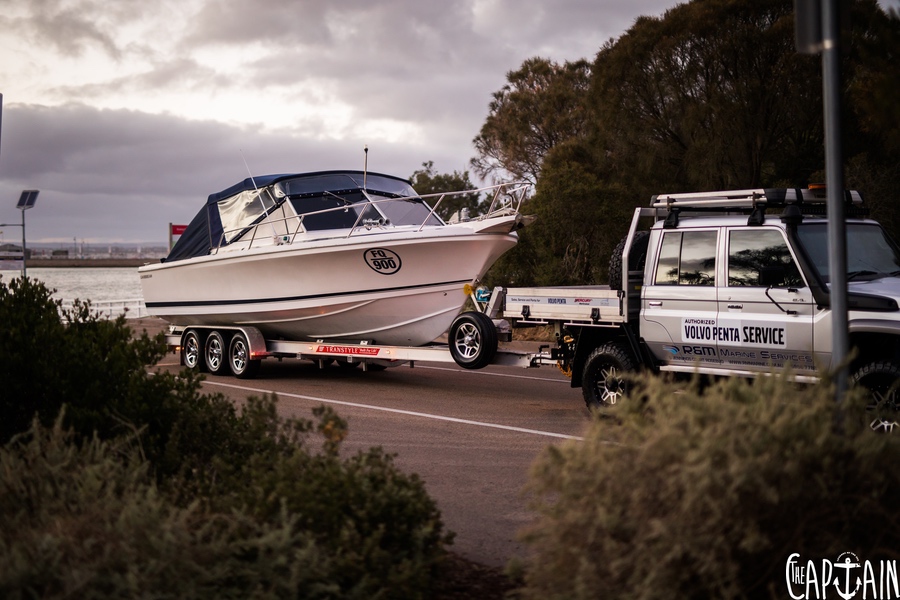

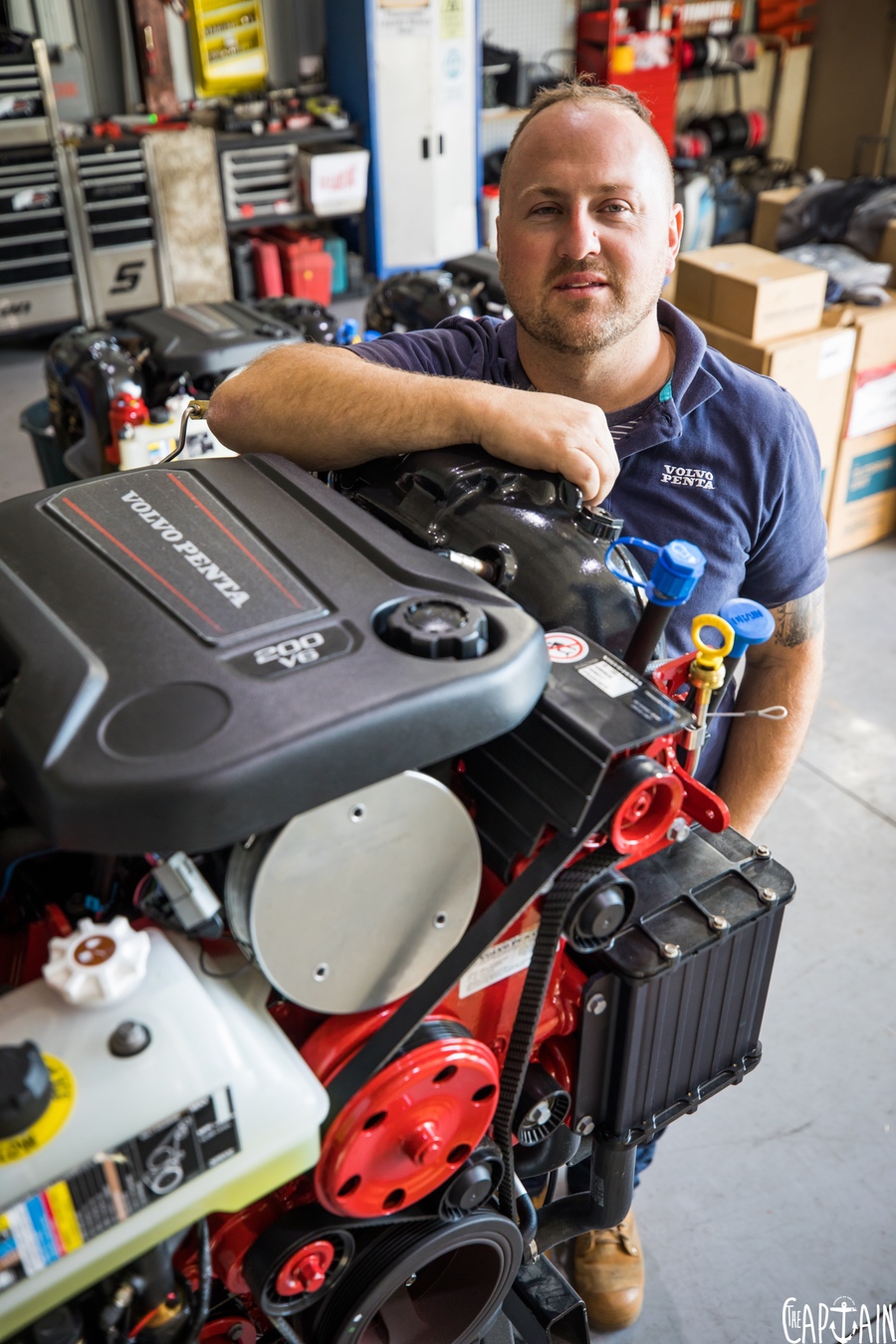
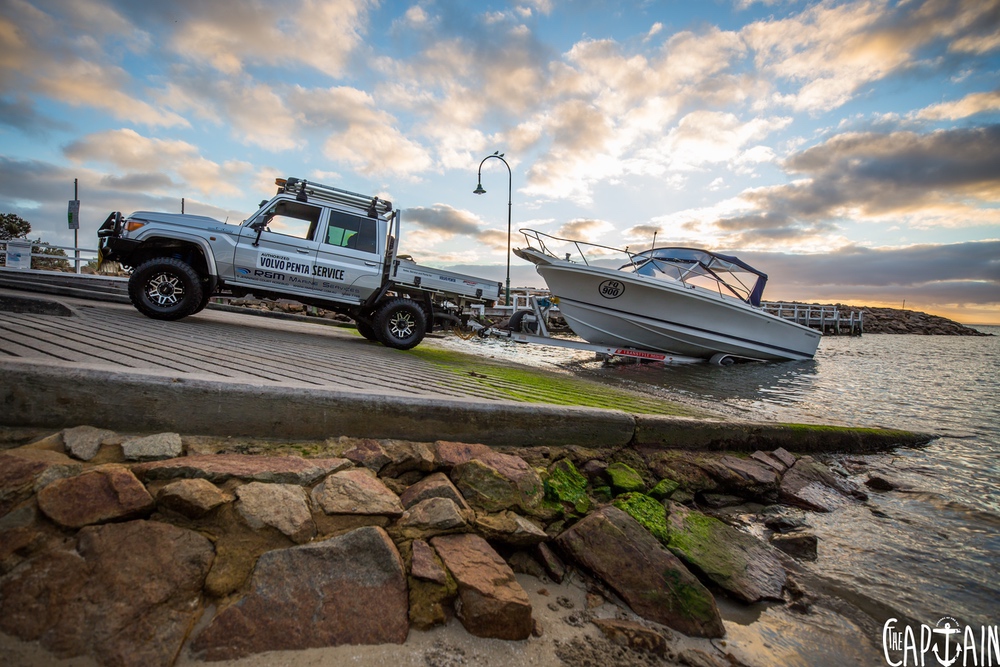
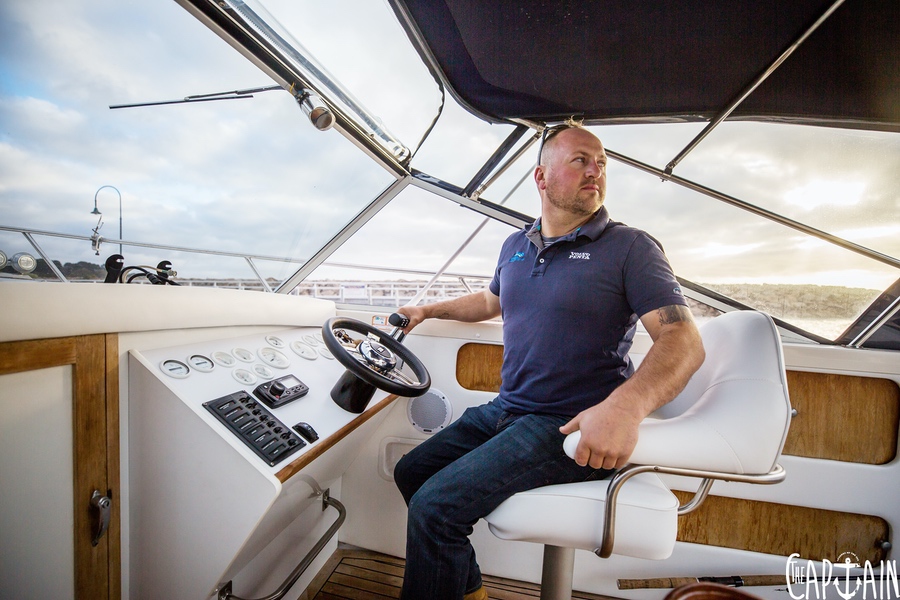
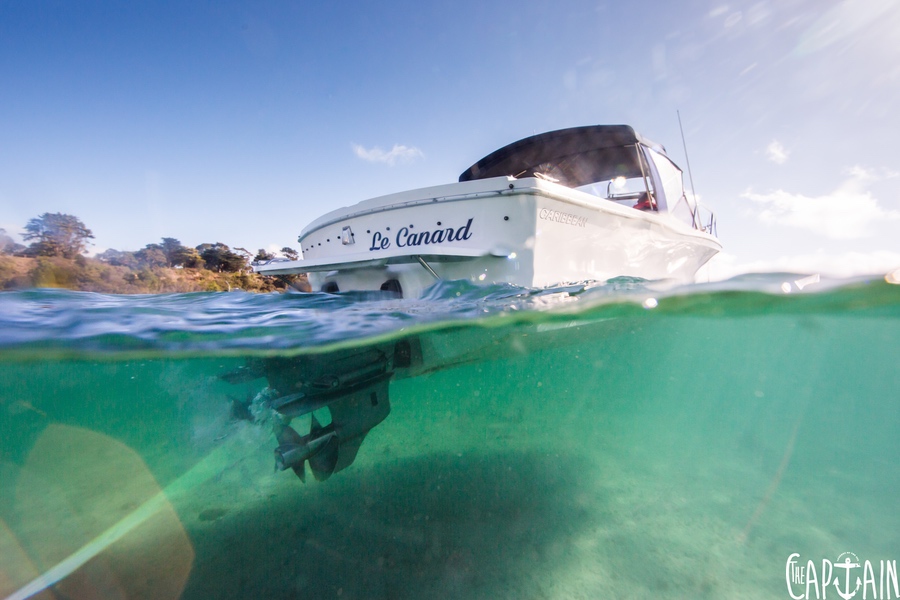

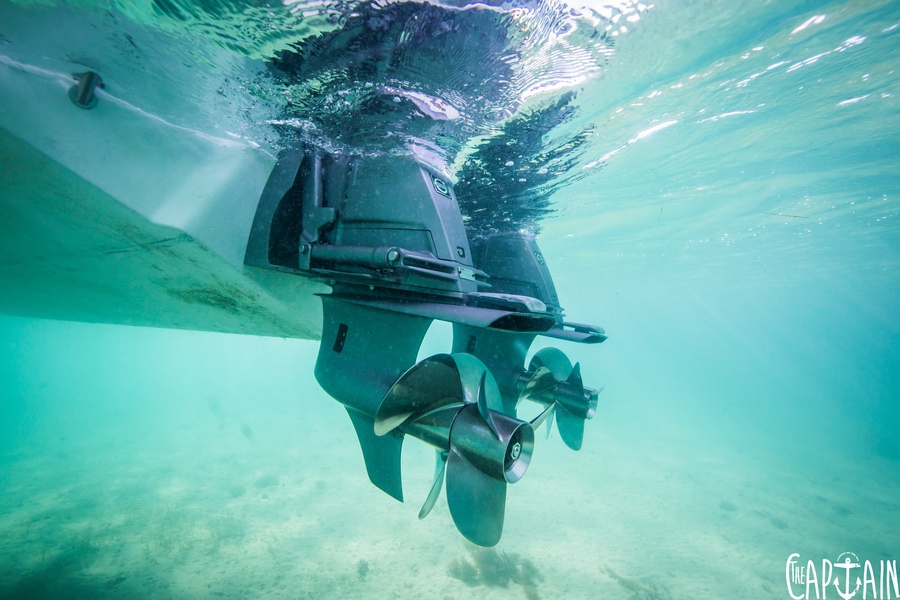
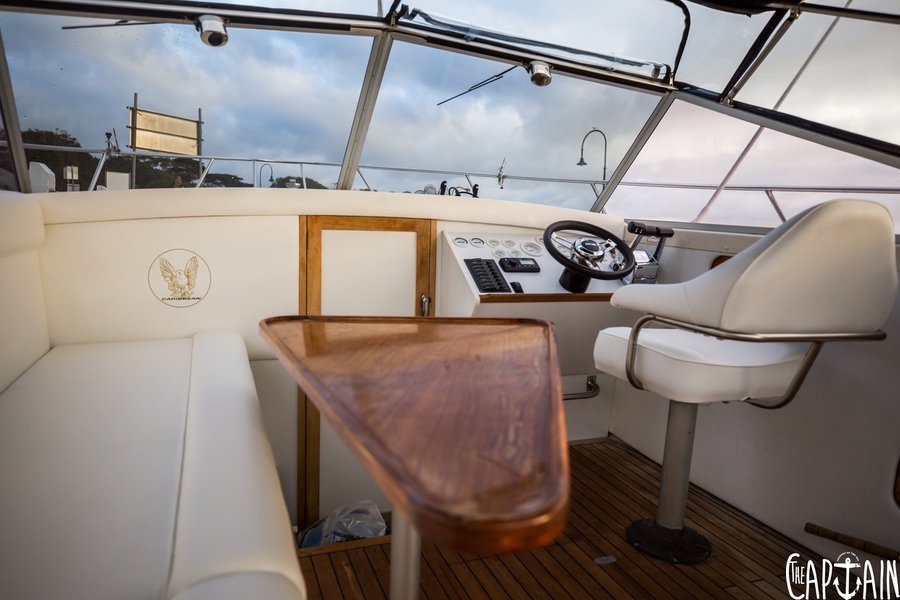

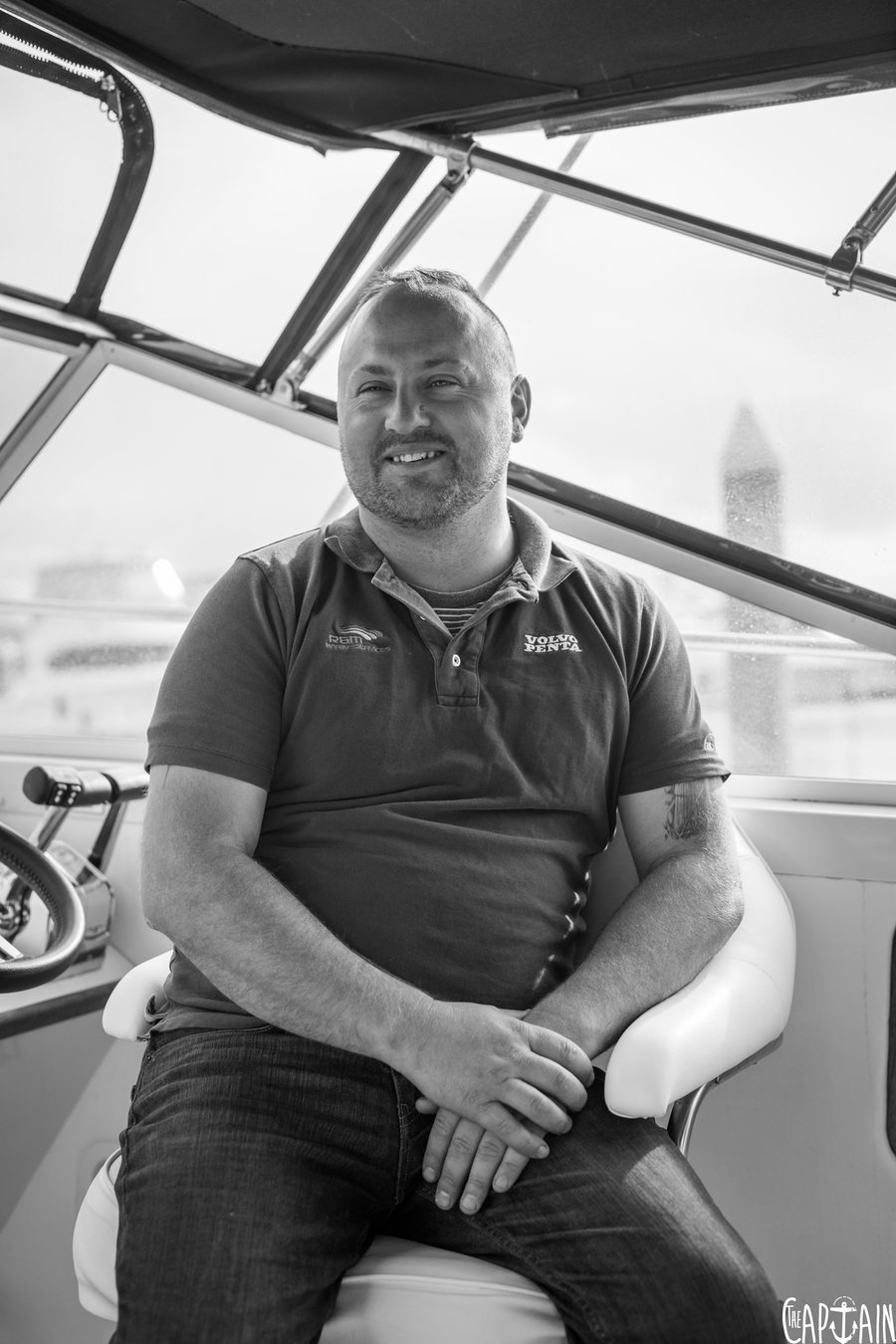
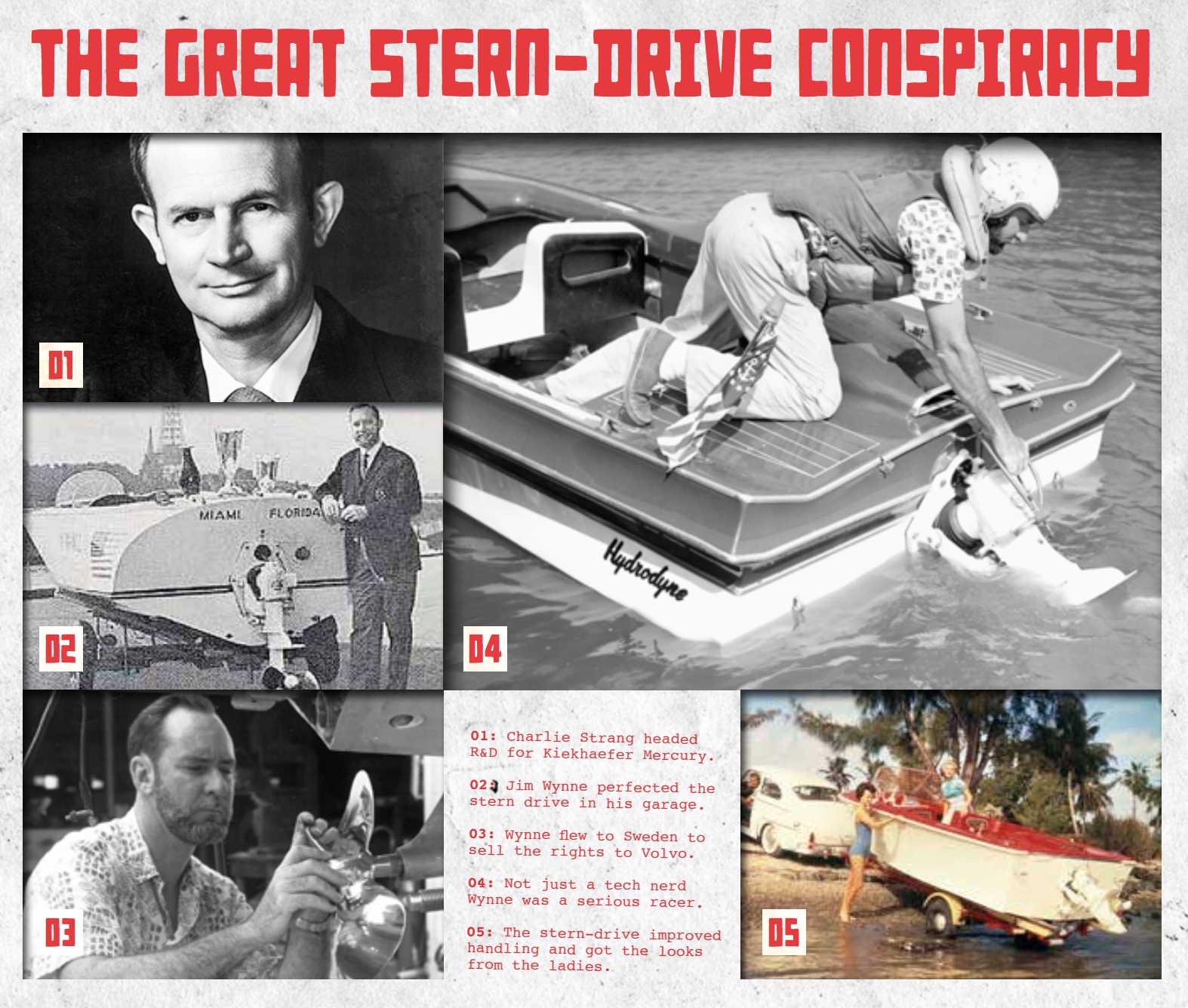
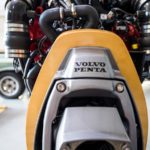
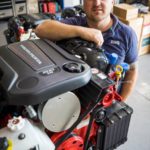
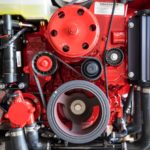
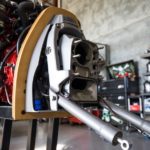
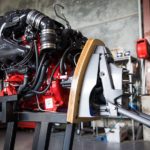
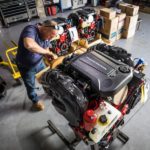
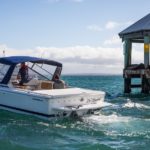
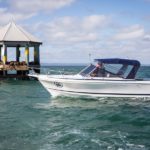
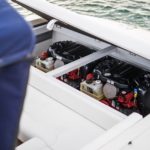
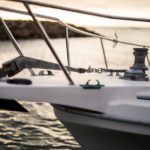
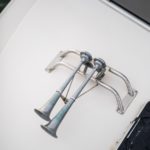
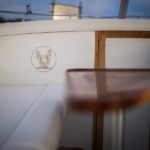

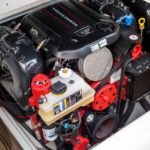
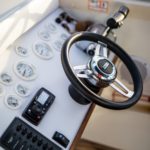
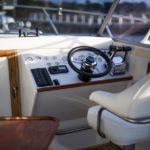
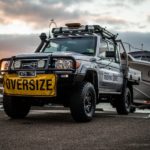
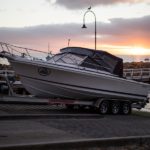
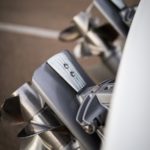
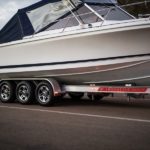
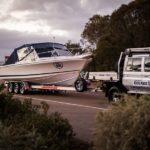
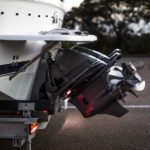
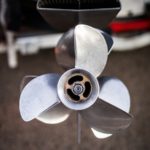
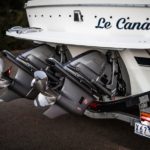
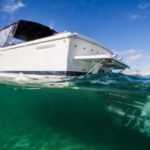

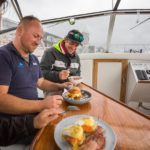
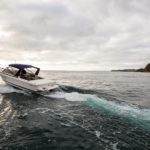
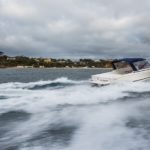
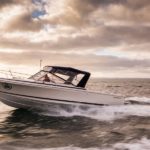

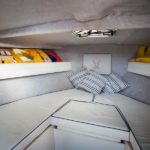

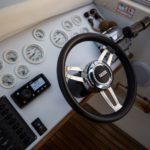
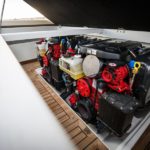
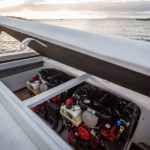
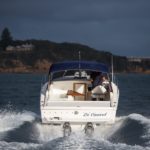
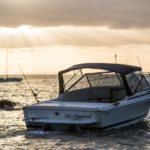
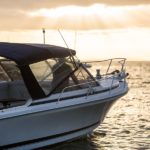
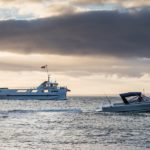

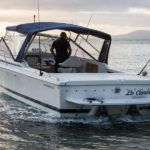
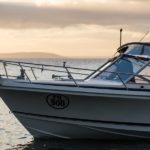
Recent Comments